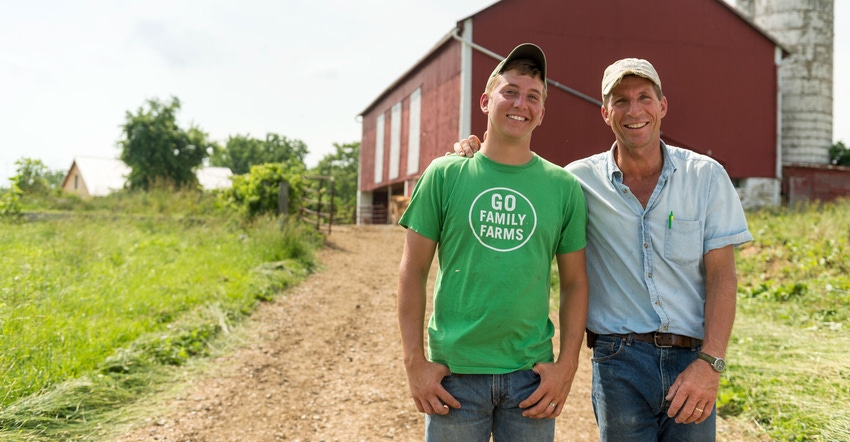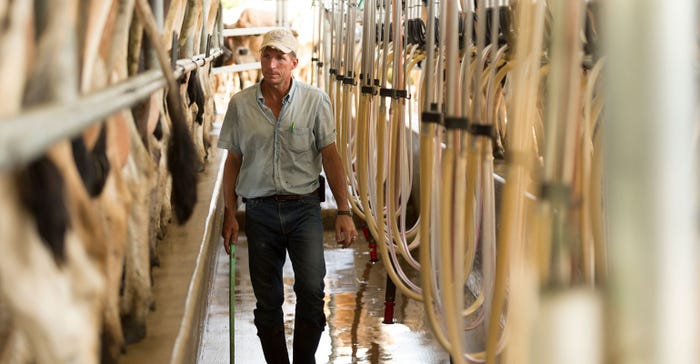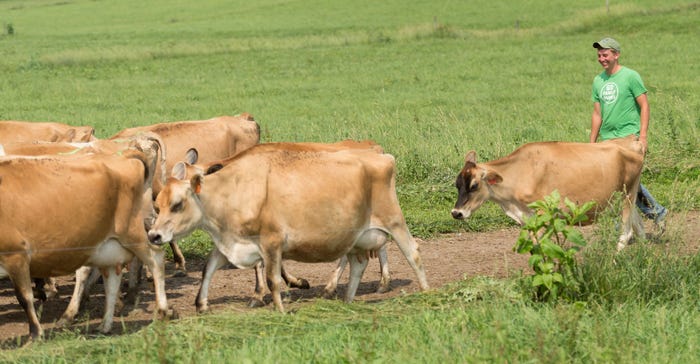
For Maryland farmer Ron Holter, developing the perfect herd for his grass-fed dairy starts with having the right sire.
"I'm pretty picky about what I use. I want what I want and I'm not finding what I want elsewhere," Holter said during a recent webinar.
So, he developed his own sire bulls, focused on grass-fed dairying. Two years ago, he put out his first bull book with six sires.
“Cookie cutter” might have a bad connotation, but for Holter it’s about getting the right offspring each time.
“With line breeding, the goal is to develop prepotency, cookie-cutter calves. You know what you're going to get. Line breeding is to breed for all the good,” he said.
Holter is the fifth generation of his family to farm in Frederick, Md. Holterholm Farms was started in 1889 and for most of its history it was a conventional dairy. In the mid-1990s, he began shifting to a more grass-based operation. A full conversion to organic was completed in 2005, and he stopped feeding grain altogether in 2007.
He and his son, Adam, are the only ones who work on the farm. They calf 140 Jerseys each spring and farm 310 acres, 200 of which they own. They raise all their own replacement animals and raise bulls for breeding.
The Jerseys average 6,000 pounds, 5.2% butterfat and 3.8% protein. All the milk goes to Organic Valley.
Grass-fed mothers
Holter practices what he calls “adaptive grazing principles,” moving the animals around the farm as grazing dictates. The cows are moved every day except Saturday.
One thing he’s learned over the years is that if a cow grazes down too much, the grass will grow back a lot slower. So, rotating is important.
“Obviously we're here to grow grass and get as much forage production as we can get," he said.
And what makes good grass-fed cows? Rumen capacity and strength. The rumen must be big enough to take in high amounts of forage, Holter said. The cows walk miles a day between pastures to carry their udder and build strength.
But everything starts with the calves.
 20-20 MILKING: In the New Zealand Swing 20 parlor, 20 cows are milked on either side at a time. Holter said the system is efficient and takes about an hour to milk all the cows.
20-20 MILKING: In the New Zealand Swing 20 parlor, 20 cows are milked on either side at a time. Holter said the system is efficient and takes about an hour to milk all the cows.

“If you want to be a no-grain dairy, that calf needs to be started without grain," he said. “It just makes a huge difference.”
Calves are kept on their mothers for the first 12 to 24 hours. After that they are switched to a “nurse cow” for the next six months. Holter designates cows that either had a high somatic cell count or are slow milkers as nurse cows.
“They are cows that typically may not be in the herd much longer,” he said. Around two calves, and occasionally three, are paired with a single nurse cow.
A week after being born, the calves are placed out on grass.
“They learn everything from their mommas. It works beautiful for us,” he said.
The ration is all pasture from April through November, when he then supplements with hay and baleage. The cows also have free-choice minerals they can pick and choose from.
Developing bulls
Training cows for grass-fed is one thing but preparing for the next generation is just as important.
"We don't have couch potatoes. Cows in confinement are pretty much couch potatoes," Holter said.
And since 50% of a calf’s genetic ability comes from its sire, having a good bull is crucial.
Holter has been doing his own breeding since at least the late 1990s. He began breeding to New Zealand sires in 1996 and then started breeding for polled heads in 2002. In 2008 he started focusing on A2A2 genetics.
Two years ago, he developed his first bull book after finding the “right size” New Zealand bull to breed to.
“It's gone pretty well. It's probably done a little better than I thought it would," he said. “I went into it not expecting anything. We did sell a nice little bit of semen and certainly it’s a blessing for the income of the farm.
 MOVING ALONG: The cows at Holterholm Farms are moved around as grazing dictates. The cows are moved every day except Saturday.
MOVING ALONG: The cows at Holterholm Farms are moved around as grazing dictates. The cows are moved every day except Saturday.

“With genetics and careful breeding there is a lot to think about. If you're line breeding, over generations you will close the circle to ‘hit the bullseye.’ We're not there yet. We're getting closer to that all the time.”
Breeding bulls, especially Jerseys, is challenging. One thing he’s done is pair older bulls with the bull calves. That way the calves learn the pecking order from the older animals and are a lot less aggressive.
Staying profitable
The COVID-19 pandemic has been hard on most dairy farms, but Holter’s farm has been largely unaffected.
“Organic milk wasn't reliant on food service or schools. We saw an increase in sales from the pandemic,” he said.
The Boumatic milking parlor on the farm is a New Zealand Swing 20 where 20 cows are milked at a time on either side. Curtains on the side of the parlor can be opened keeping it cool in summertime.
The cows are milked twice a day; Holter said it takes about an hour for he and his son to finish the milkings.
As his cows only produce 6,000 pounds per head and he only feeds grass, Holter keeps a close eye on profit per acre. He works with University of Maryland on financial analyses of the business.
Read more about:
BreedingAbout the Author(s)
You May Also Like






